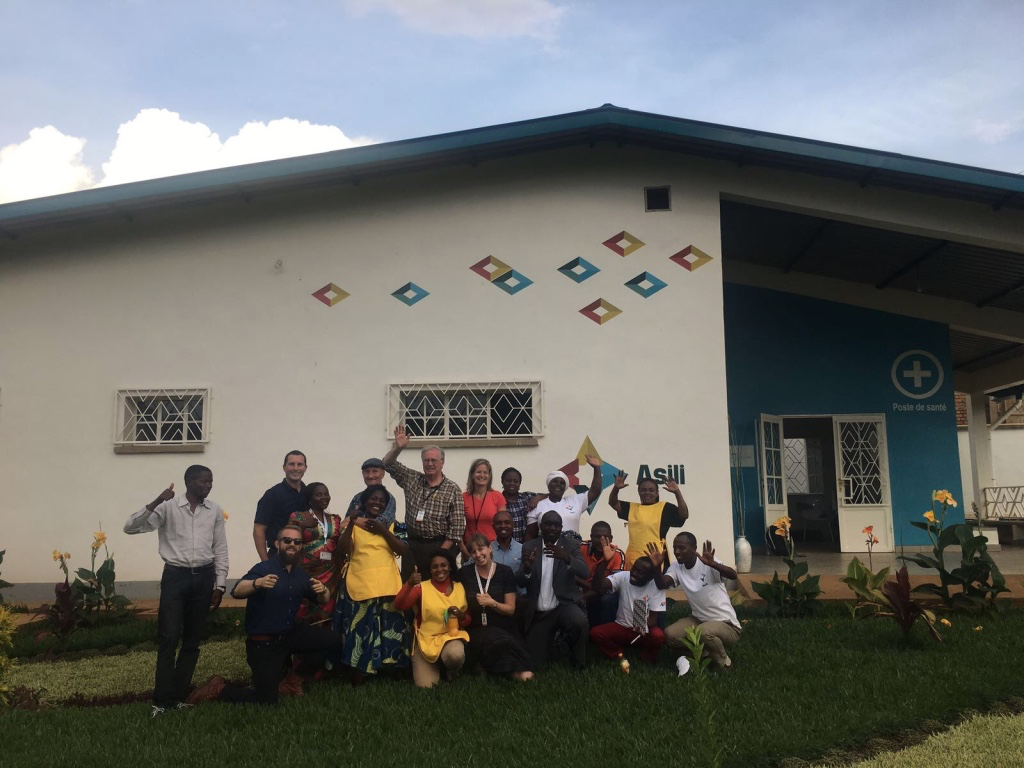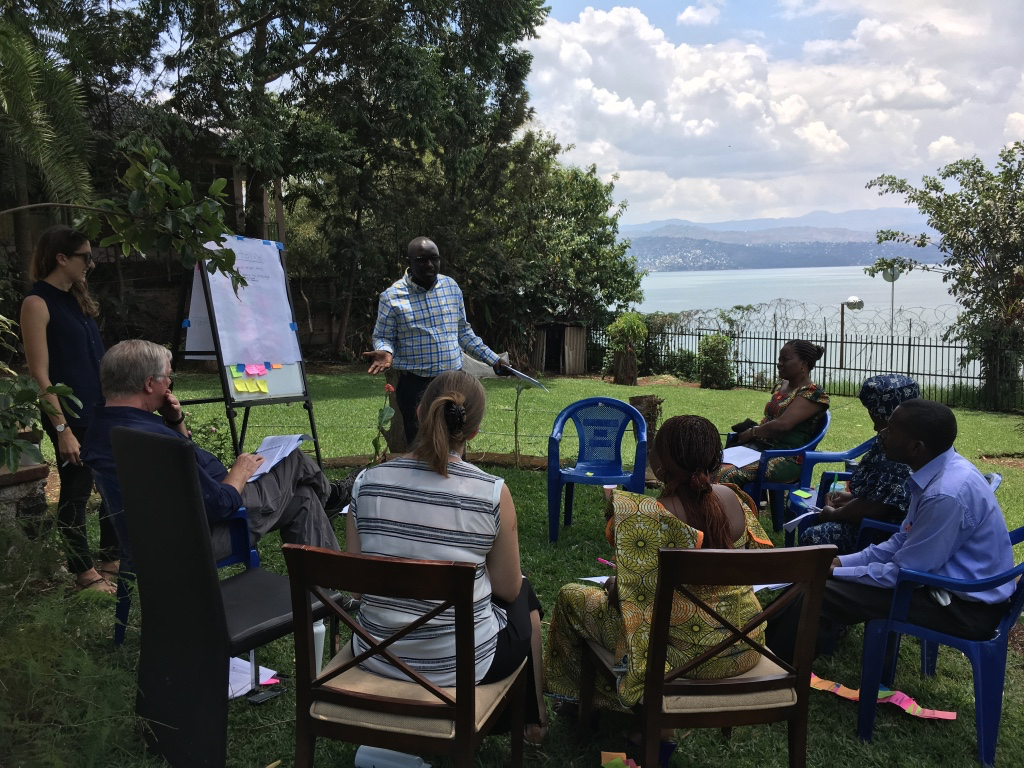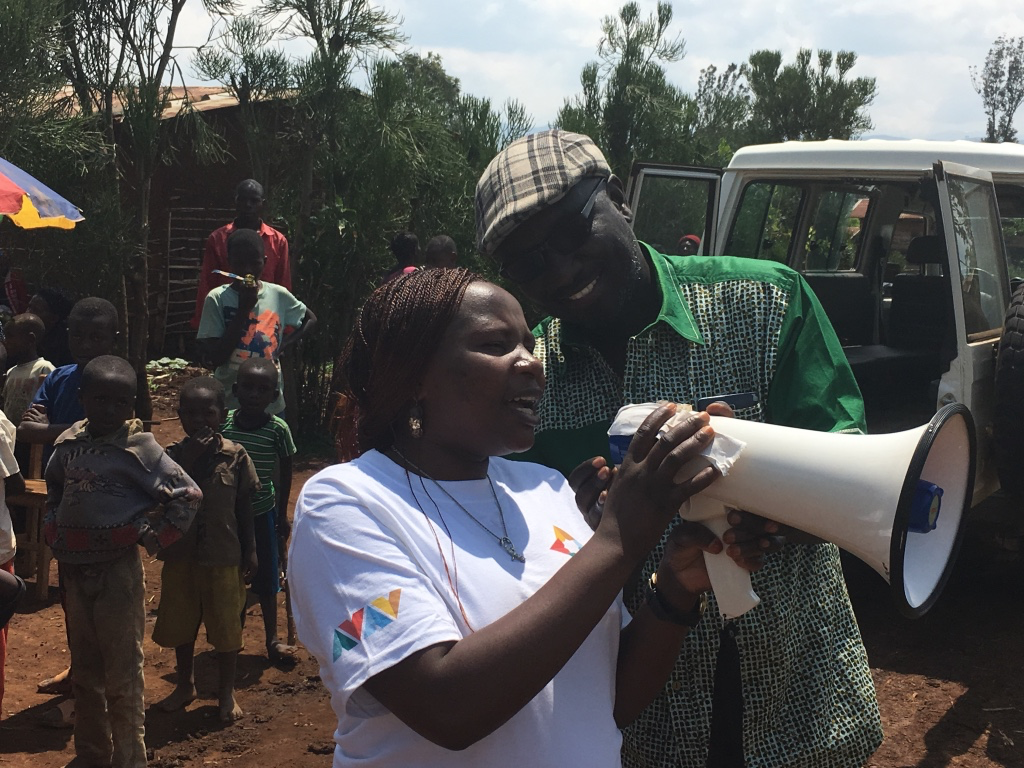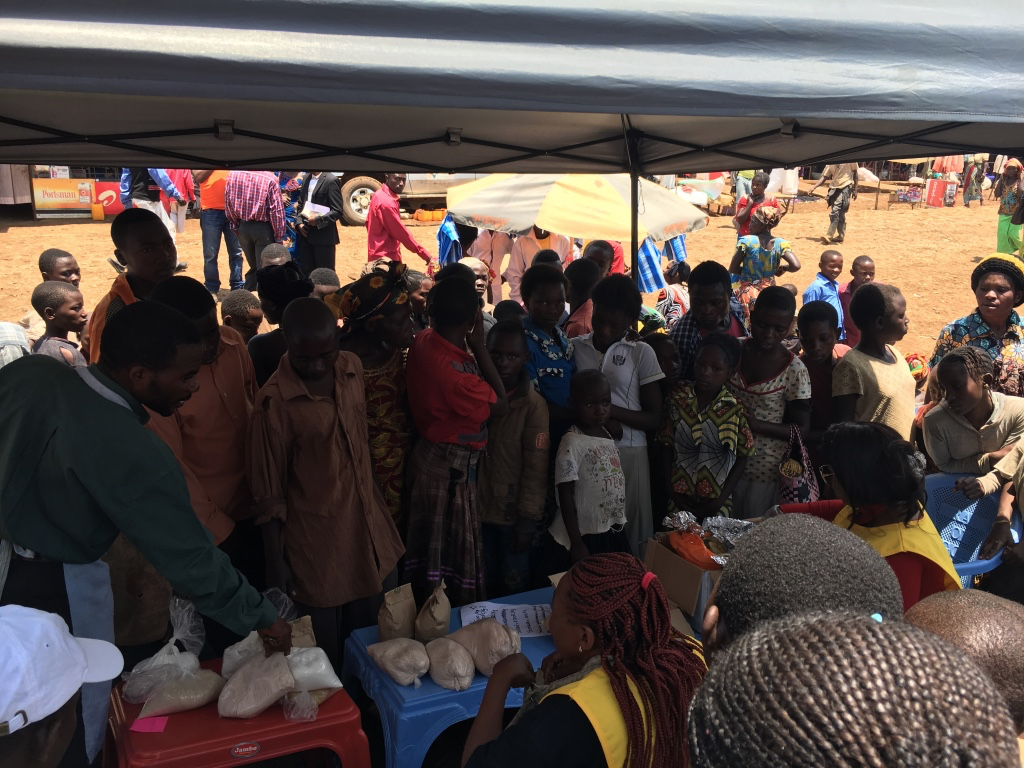Have you ever had the chance to use the principles and tools for your professional work in a completely new environment? I recently had the opportunity to apply Design Thinking principles to a very different environment than corporate IT. Working with the Social Enterprise Asili, a partner organization of American Refugee Committee (ARC) based here in Minneapolis, I had a hands-on prototyping experience in the Democratic Republic of Congo (DRC). They use a process championed by IDEO called Human-Centered Design which also comes out of the Stanford d.school as a way to stay focused on the people or users of the system, or in this case services.

Before this trip, I didn’t know much about DRC other than it was in the middle of the continent. It was originally a Belgian colony, which gained its independence in 1960 and for a time was called Zaire. Not only has there been a lot of instability and corruption in the country, there have been deadly wars since 1996 within the borders sometimes referred to as The African World War. The reasons for the fighting are many, with many countries involved. Over 5 million people have been killed in the violence and from the resulting disease and malnutrition. Even though the country is rich in minerals, it is extremely poor and lacks basic infrastructure and services. Like many countries in the region, they are waiting for their next election and hope that it can be free and fair.
Asili is a business startup in DRC focused in three areas: 1) Agriculture Co-op to improve member’s output and income, 2) health clinics to provide affordable, quality care and 3) a water system to provide a clean, reliable source of water. This is not a charity where people get these items for free. It is a membership organization people join to get reliable services. In three years they have built three zones in communities around Bukavu, a city on the Rwandan border, and are in the process of building the fourth. The whole idea of Asili is based on prototyping, seeing what works and what does not – fail fast and adapt, very much like the “ideate/prototype/test” steps we use in Design Thinking. In a short period of time Asili has built a strong reputation in Bukavu for the high quality of services they provide–but there is always room for improvement and that is what our trip was all about.
The first step in Human-Centered Design is Inspiration to understand the people who are in the communities Asili serves. This was done remotely by working closely with a couple who lived in Bukavu for over a year when Asili started. We also worked with Team Zuka staffed by Asili in-country who had been identified to “get going” (the meaning of zuka in Swahili) on new initiatives. Much more of the understanding happened when we were on site, it was eye opening and informative.
Next was Ideation around their three core areas to come up with ways to generate additional revenue and provide quality services to continue to grow the business model. This came about through a lot of post-it notes and whiteboards with information going back and forth between the continents to narrow down the 2 ideas that we would prototype when we were on-site: a market for healthy items and nurse home visits.
While meeting in the US, we came up with detailed lists and process ideas for the prototypes, but then it was time to put them into practice with the Implementation of the prototypes (step 3). One of the key discussions we had was regarding how they want to do something quick and easy to see how well it was received in the community, to determine if it was sustainable. If it didn’t work, that didn’t mean the trip was a failure, only that it was time to tweak the idea or move to something new. That is the point of prototyping and not spending years on an idea only to find out it wasn’t a fit. (sound like any IT programs you’ve been on?)
The first days were focused on us getting a better understanding of the community and meeting Team Zuka in person. We then spent time further developing the prototypes in two teams. One team was focused on what items to sell, where to sell, what days (market day or not), and what price to charge. The other team was determining how to get a nurse out for house visits in the community.

Working with people from the community was key to advancing the ideas. Things like using a megaphone to advertise the new services while driving around the area are things that we never would have thought of in the comfort of our home or office. This really showed how important it was to get the perspective of the users and not only rely on what we thought would work.

Both prototypes were successful and very popular on the days they were offered. Many of the customers asked when the goods would be available for sale or visits to the homes happen again. But the prototypes also revealed the need for some adjustments. For example, comments regarding the home visits pointed out the cost and the need to have several days or until the next market day to have the money to pay for the visit. Another learning was that to make the Mososo (healthy porridge for children) more affordable, it was necessary to plan the purchase of raw ingredients. While we had to return home, the work continues and additional prototypes continue expanding upon the ideas, such as incorporating the selling of Mososo on vaccination day.

This was an incredible experience in so many ways. It reinforced to me the importance of working with the users of whatever the end product may be (workable software or a nurse visit) to really know what will work. Anything determined to not be working should be dropped and energy spent elsewhere. It seems so easy, but is hard to accept that failure of an idea is a good thing in the long run. There were several people on the trip that did not have exposure to something like Design Thinking and had to go through the uncomfortable stage of approaching work this way, but all agreed in the end it was the only way we could have added the value we did in such a short time.
View our LinkedIn, here.